Scientist Found 3,700-Year-Old Tomb Of Canaanite Rulers In Megiddo, Israel
“These studies have the potential to revolutionize what we know about the population of Canaan before the rise of the world of the Bible,” said Israel Finkelstein, head of the excavation team.
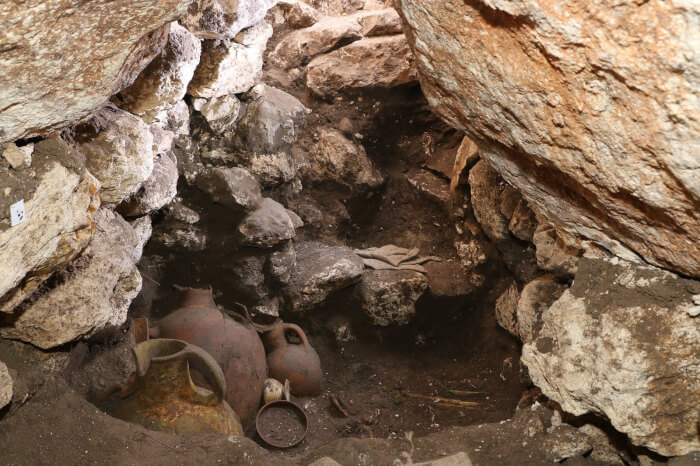 Source: National Geographic
Source: National Geographic
Interior of Tomb 50, an undisturbed burial chamber from some 3,600 years ago at Megiddo, looking toward the south corridor
The tomb is located at an archaeological site named Megiddo, 19 miles south of Haifa, Israel. During prehistoric era, the site played a crucial key for overlooking the Jezreel Valley, a significant trade route, until the 20th century.Being among the most notable archaeological locations in Israel, Megiddo has been examined by experts for more than a century, leading to a number of discoveries, including palaces, temples, and city walls from the Bronze and Iron Age (3300-586 BCE).
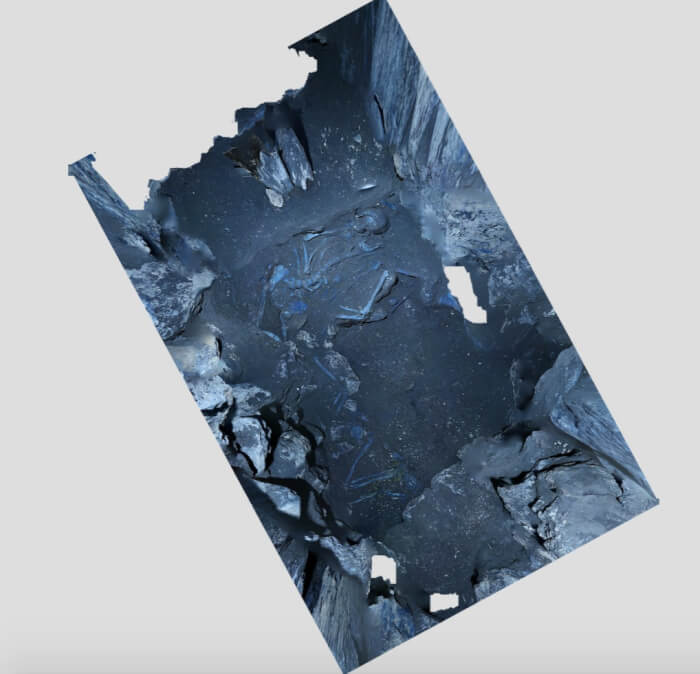 Source: National Geographic
Source: National Geographic
An orthophoto created from a 3D model of an adult male (center) and adult female (bottom) during excavation of the 3,600-year-old burial cave at Megiddo
Scientists have begun to search the site of the tomb since 1930, but only until recently have them noticed the cracks forming in an excavation area close to the Bronze Age palaces, where the dirt seem to be falling into an underground cavity.Archaeologists found the reason for the disturbance in 2016 with the discovery of an underground corridor leading to a crypt containing the intact remnants of 3 people, who are a child between 8 and 10, a woman in her 30s and a man from 40 to 60 years old.
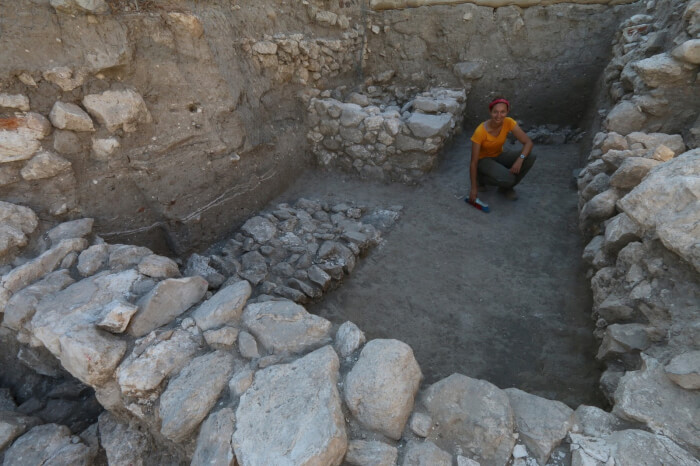 Source: National Geographic
Source: National Geographic
Area of excavation at Megiddo before the tomb was revealed. The first stones of the corridor are visible in the right corner behind archaeologist Melissa Cradic
Gold and silver jewelry, mainly rings, brooches, bracelets and pins, were used to decorate the remains. Specifically, archaeologists found a gold necklace and a gold diadem crown on the skeletons of the male individual. All the artifacts depicted expertise in artistry.The remnants in the tomb might be from royal family members, according to Finkelstein. “We are speaking of an elite family burial because of the monumentality of the structure, the rich finds and because of the fact that the burial is located in close proximity to the royal palace,” he explained.
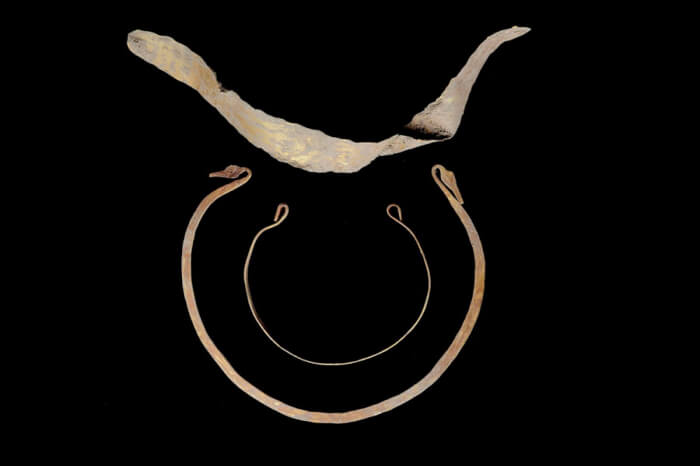 Source: National Geographic
Source: National Geographic
The gold jewelry that adorned the adult male burial includes (from top) a diadem, a bracelet, and a torque necklace
Apart from the jewelry, archaeologists also discovered ceramic vases from Cyprus and stone jar possibly originated from Egypt, proving the significant role of Megiddo as a trade center between prehistoric Egypt and Assyria. It further seems that the crypt was used for burial numerous times at different eras.The tomb had been used in two distinct periods, according to Melissa Cradic, member of the team of archaeologist and an expert in prehistoric burial rituals in the region. The first time the chamber was used to bury at least 6 people over a short period. Much later, the remnants were pushed to the back of the tomb in a jumble of bone, leaving space for the 3 newly deceased in front.
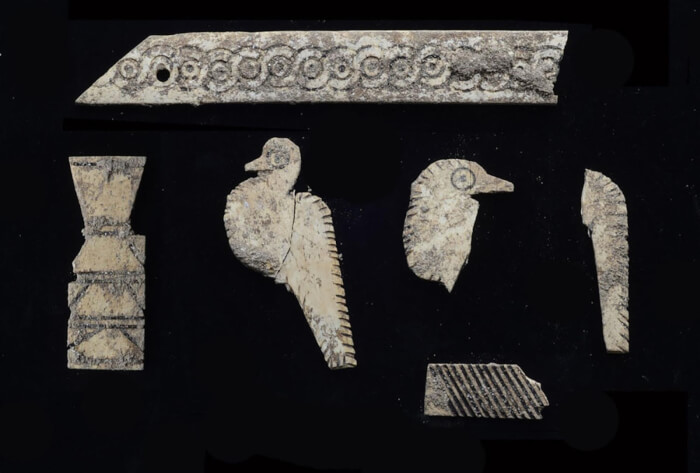 Source: National Geographic
Source: National Geographic
Dozens of incised ivory plaques discovered in the tomb once covered a wooden box that no longer exists
Experts think that the buried individuals might have been related, due to the similarities of the relics and jewelry decorated on the remnants, suggesting that the burials were for distinct generations from the same family or for members of the same social group.“However, the final three were probably of special importance based on the high quantity and exceptional richness of their grave goods, as well as the fact that their bodies were not disturbed after burial,” claimed Cradic.
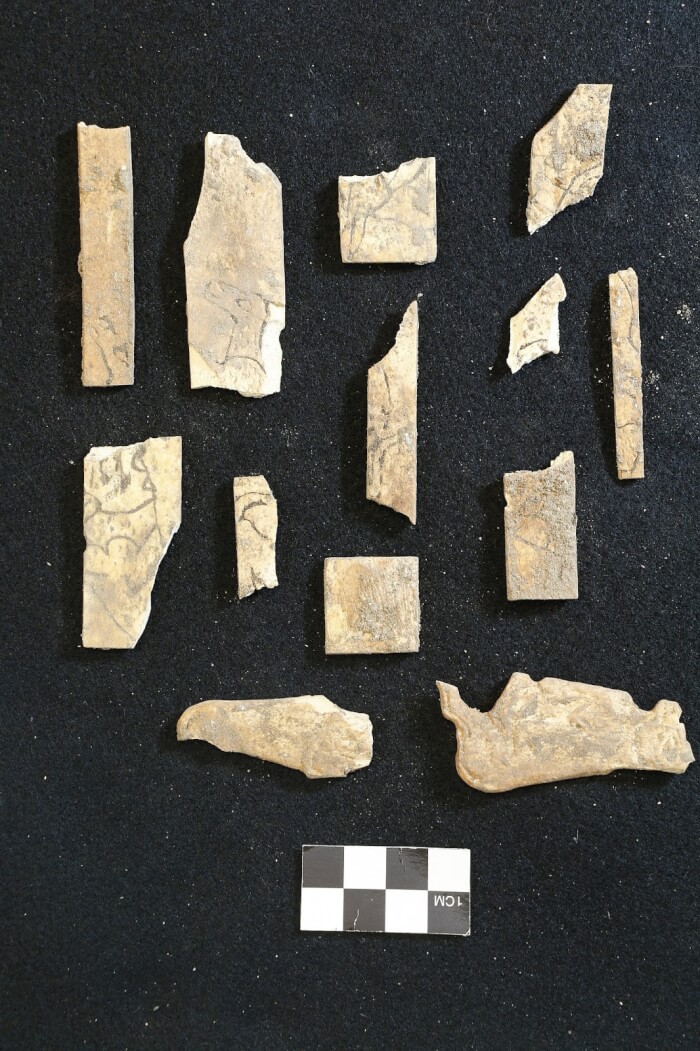 Source: National Geographic
Source: National Geographic
Decorated bone plaques discovered inside the 3,600 Canaanite tomb at Megiddo that likely covered a box made out of wood or other perishable materials
Rachel Kalisher, a bioarchaeologist carrying out inspection on the bones, said that there is proof that there was a genetic bone or blood disorder in the remnants of individuals from both periods when the tomb was used, indicating the connection between the deceased.Meanwhile, Finkelstein also revealed that they were carrying out extensive DNA analysis on the skeletons inside the chamber and from other sections of the site. He hopes that the outcome may be able to point out if the residents of the Canaanite city-state were of the same ethnic origin as the elite or not.
VIDEO: